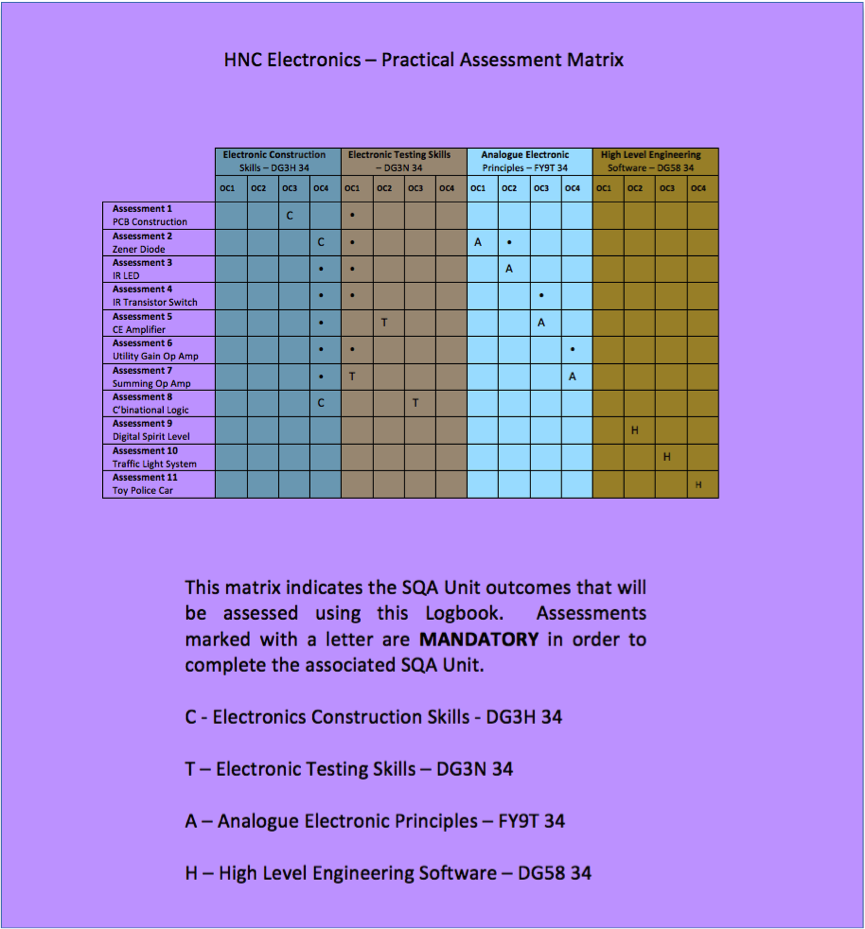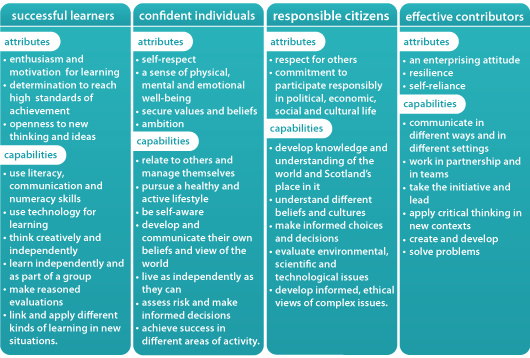1. Getting Started: Readings
3. Principles of Assessment
This may seem a bit odd at first – asking what our principles are and defining them, perhaps it seems a bit of a philosophical detour? But it does make good sense when adopting new technologies to stand back a little and reflect. Otherwise there is strong tendency to continue with existing attitudes and practices that use the technology with poor results. If your institution has defined values and strategies about teaching, then look at them and see how they might be enacted with the use of technology via e-assessment in this section we look at some examples.
Assessment using projects – at City of Glasgow College
For instance, the City of Glasgow College has a teaching and learning strategy, which stresses the need to adopt a project-based teaching model; this in turn has major implications for assessment design and SQA verification procedures. The approach is described as:
“Here’s how the project model works
We need to make sure that our students develop the skills employers need. We also need to create a learning experience that mirrors the working environment as closely as possible. To do this, we’re adopting a project-based model.
The project brief is developed by lecturers, alongside input from employers, guaranteeing that the outputs are directly relevant to industry. The outputs could even be practical results that are applied in the workplace, support the work of a social enterprise, or contribute to the community.
Through integration, each project is designed to meet the outcomes of some of the constituent units of the course. In some cases, it is appropriate to include elements that involve cross-disciplinary working between different curriculum areas. The students’ work on the project is supported in a variety of ways. This includes workshops, team teaching, group work, independent study - including use of MyCity [the VLE] – work experience and other experiential learning, such as trips and visits. Students work collaboratively with their colleagues but also with lecturers, and even employers. The outputs are then assessed by peers, lecturers and employers.”
From: The City of Glasgow College Staff Induction Guide
In several development projects at the college this has involved negotiation and consultation with the SQA in order to propose assessment methods and instruments, which would incorporate several single units together into a single project. This would need to be done anyway whether e-assessment was involved or not. Below is an image of a graphical matrix representing the remapping of the individual SQA unit assessments across the project as a whole:

Caption: Assessments mapped across several units to support project-based teaching Photo: CIT-eA Project
The Scottish Curriculum for Excellence Principles
When designing assessments, we also need to think about the principles connected to the Scottish Curriculum for Excellence(CFE) this has as its general aims to develop 4 key capacities in each young person to be:
-
a successful learner
a confident individual
a responsible citizen
an effective contributor
The table below from the Education Scotland [1] breaks down these capacities into attributes and capabilities.

Students entering the FE and HE sectors from 2015 on will have been educated in this system and the government has an expectation that these sectors will engage with these aims in the design of their provision. So when redesigning an assessment this is also an opportunity to ‘design in’ elements of the CFE.
Principles of Assessment Design from the Scottish REAP Project
The ideas developed by the REAP project bring a broader view of assessment that are useful to refer to when redesigning your existing assessments. Below are the REAP principles of ‘good assessment design for the development of learner self-regulation’.
The first seven are about using assessment tasks to develop learner independence or learner self-regulation ("empowerment").
The final four principles are about using assessment tasks to promote time on task and productive learning ("engagement").
Balancing the "engagement" and "empowerment" principles is important in the early years of study in HE and FE.
Eleven General principles of good assessment design
"Empower"
-
Engage students actively in identifying or formulating criteria
Facilitate opportunities for self-assessment and reflection
Deliver feedback that helps students self-correct
Provide opportunities for feedback dialogue (peer and tutor-student)
Encourage positive motivational beliefs and self-esteem
Provide opportunities to apply what is learned in new tasks
Yield information that teachers can use to help shape teaching
"Engage"
Capture sufficient study time and effort in and out of class
Distribute students’ effort evenly across topics and weeks.
Engage students in deep not just shallow learning activity
Communicates clear and high expectations to students.
Twelve Principles of good formative assessment and feedback
Each
principle is followed by questions to help you contextualise it:
-
Help clarify what good performance is (goals, criteria, standards). To what extent do students in your course have opportunities to engage actively with goals, criteria and standards, before, during and after an assessment task?
Encourage ‘time and effort’ on challenging learning tasks. To what extent do your assessment tasks encourage regular study in and out of class and deep rather than surface learning?
Deliver high quality feedback information that helps learners self-correct. What kind of teacher feedback do you provide – in what ways does it help students self-assess and self-correct?
Provide opportunities to act on feedback (to close any gap between current and desired performance). To what extent is feedback attended to and acted upon by students in your course, and if so, in what ways?
Ensure that summative assessment has a positive impact on learning. To what extent are your summative and formative assessments aligned and support the development of valued qualities, skills and understanding?
Encourage interaction and dialogue around learning (peer and teacher-student. What opportunities are there for feedback dialogue (peer and/or tutor-student) around assessment tasks in your course?
Facilitate the development of self-assessment and reflection in learning. To what extent are there formal opportunities for reflection, self-assessment or peer assessment in your course?
Give choice in the topic, method, criteria, weighting or timing of assessments. To what extent do students have choice in the topics, methods, criteria, weighting and/or timing of learning and assessment tasks in your course?
Involve students in decision-making about assessment policy and practice. To what extent are your students in your course kept informed or engaged in consultations regarding assessment decisions?
Support the development of learning communities. To what extent do your assessments and feedback processes help support the development of learning communities?
Encourage positive motivational beliefs and self-esteem. To what extent do your assessments and feedback processes activate your students’ motivation to learn and be successful?
Provide information to teachers that can be used to help shape the teaching. To what extent do your assessments and feedback processes inform and shape your teaching?
[1] You can find out more about the Curriculum for Excellence at this weblink http://www.educationscotland.gov.uk/learningandteaching/thecurriculum/whatiscurriculumforexcellence/thepurposeofthecurriculum/index.asp↩
